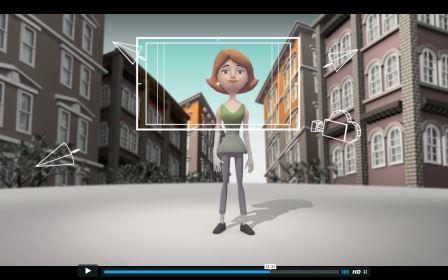When it comes to distributing and marketing explainer videos, there is no perfect answer. Especially not in our rapidly changing online environment. But while trends come and go and technology changes the game, there are a handful of best practices that have developed over the years and can provide assistance with distributing and marketing your explainer video.
SEO (Best Practices)
One of the primary benefits of adding an explainer video to your web page is that it can help provide a tremendous boost to your SEO rankings. The most immediate and significant way in which an explainer helps increase that ranking is by increasing the amount of time the average user will spend on your page.
The average attention span is 8.25 seconds, a figure that generally coincides with the amount of time the average user will remain on a website that doesn’t immediately capture his or her interest. Given this low figure, an explainer video is able to compensate in two important areas:
- Increases likelihood of capturing viewer’s interest
- Increases visit time on web page
The first benefit, on its own, is not something that will directly improve an SEO ranking. But, of course, capturing the viewer’s interest leads to the second benefit (time spent) and therefore can improve your SEO ranking.
Since, by this point, your explainer video is already complete—meaning the duration of your video is already fixed—the goal here is to surround your explainer with tangentially related or easily accessible content that will increase that number even more.
Nearby content often includes:
- Brief caption (about 25-50 words) about the explainer video
- Direct links to specific benefits/features mentioned in the video
- Highly accessible means to initiate the call to action (i.e. sign up for free trial)
HOSTING (Best Practices)
One of the first decisions that you’ll have to make is figuring out where (and how) to host your explainer video. The two most popular options are YouTube and Vimeo. Each, of course, has their own unique advantages and flaws. To help determine which service is best for you, outline the pros and cons of using each option:
Which Video Sharing Service is Right for Me? (Part 1: YouTube)
Which Video Sharing Service is Right for Me? (Part 2: Vimeo)
TO AUTOPLAY OR NOT TO AUTOPLAY (Best Practices)
For those unfamiliar with autoplay, it’s a feature that will automatically begin streaming your video as soon as a user visits your website. As opposed to the alternative in which users consciously click your video to begin play.
With regards to autoplay, best practices vary depending on where your video is being shared. Below is a breakdown of where autoplay is typically implemented versus instances where it is not the standard (with a brief reasoning below):
“YES” Autoplay: Facebook, Twitter, Snapchat, Instagram
“NO” Autoplay: Website Landing Pages, E-mail
In general, autoplay has become the norm for sharing on social media. Partly this is dictated by the platforms themselves, but the logic is also that there is a lot more “noise” in the social media space and automatically starting up videos provides a better means to stand out. Please note, however, that in most cases the standard is for the autoplay to run without sound unless the user selects otherwise.
Despite a growing trend to use autoplay in the social media space, it is still rather uncommon in the more professional spaces (i.e. website, e-mail). The reason being that autoplay may come across as intrusive (especially if audio is played).
SOCIAL MEDIA SHARING (Best Practices)
When it comes to maximizing the value of your explainer video on social media, it’s all about three things: Targeting, Targeting, Targeting! The goal of an explainer video is not to goal viral (in the same sense as, say, a cuddly cat video), but rather to connect with your target audience. Finding and cultivating that specific demographic is the key.
Unpaid advertising on social media is a difficult challenge—one that’s becoming even more difficult as platforms further focus on paid ads—but that does not mean the endeavor is without merit or consideration. Below are a few tips:
- Less is More: Even though Twitter may “give you” 140 characters, that doesn’t mean you need to use them all. The goal on any social media platform—be it Twitter, Facebook or one that doesn’t yet exist—is to let your explainer video do the talking. With this in mind, all you need to do is set it up with a short, enticing descriptor and likely a link to your webpage.
- Know Your Platform: On platforms like Facebook, where this is a more intimate (and generally visible) connection with your followers, it is wise to avoid frequently re-posting your promotional content. Whereas on platforms like Twitter, where posts are more easily missed (and viewers rarely look at your complete timeline), a more persistent form of promotion is acceptable.
- Transform Questions/Comments in Connection: If someone on one of your social channels—be it a follower or a stranger—replies to your video, try to reply as quickly and thoughtfully as possible. Unlike the first tip, this is where less is not more. Ask questions, be polite and try to cultivate a true connection.
(62)










